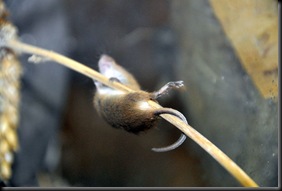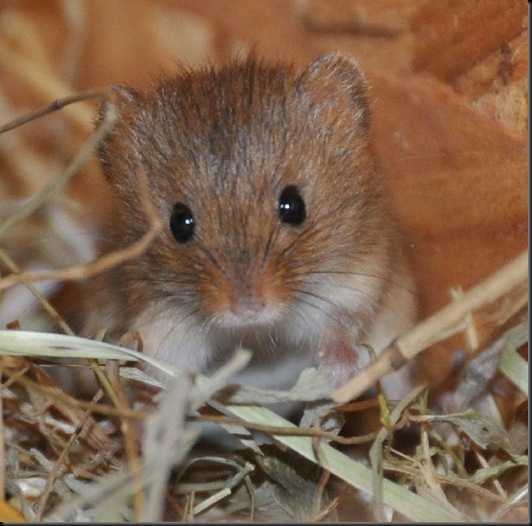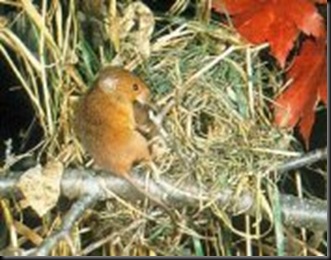Four or five months ago we introduced a new female Harvest Mouse to our collection - a new bloodline to add genetic diversity to our existing stock. On arrival at the Park the newcomer was really tiny and obviously very young. We selected a male from our collection at random and placed the two of them in our breeding tank with high hopes for a successful pairing. After eight weeks there was no evidence of any intimacy and definitely no patter of baby mice feet - however as the new female was still quite small we decided to leave the pair together for a while longer and hoped that future warmer spring weather might be the catalyst for new life ……
Nature, of course, has its own plans and own perfect agenda …. so we were surprised but delighted to discover four new mid-winter babies! These tiny creatures really are very endearing …..
Some Interesting Harvest Mouse Facts:
Latin Name: Micromys minutus
Appearance: Britain and Europe’s smallest mammal - other than the Pygmy Shrew (Sorex minutus)
 The Harvest Mouse is the only British animal to possess a prehensile tail – this is used as a fifth limb which it wraps around grass and twigs to help give it balance and grip.
The Harvest Mouse is the only British animal to possess a prehensile tail – this is used as a fifth limb which it wraps around grass and twigs to help give it balance and grip.
Size: length: 50-70mm.
Weight: 4-6 grams
Lifespan: In the wild a maximum of 18 months. In captivity 2 years or more.
Distribution: They range across Europe (although not in most of Scandinavia) E. Russia, Korea, S. China and N. Korea. In Britain they are found from Yorkshire southwards and parts of Wales.
Habitat: Hedgerows, reed-beds, and other areas of tall, dense vegetation.
Diet: In the wild they mainly eat a mixture of seeds, berries and insects; moss and roots are occasionally eaten.
Breeding: Two or three litters a year in the wild, between late May and October. Litters of 4-6 young. The only British mammal to build nests of woven grass well above ground.
Conservation: Harvest mice are listed as a BAP (Biodiversity Action Plan) Species because they have become much scarcer in recent years (they are now extinct on the the Isle of Wight). Modern farming methods have caused a reduction in hedgerows, and combine harvesters leave harvest mice in grain fields with little chance of escape.
Predators: Weasels, stoats, foxes, cats, owls, hawks, crows and sometimes pheasants.








No comments:
Post a Comment